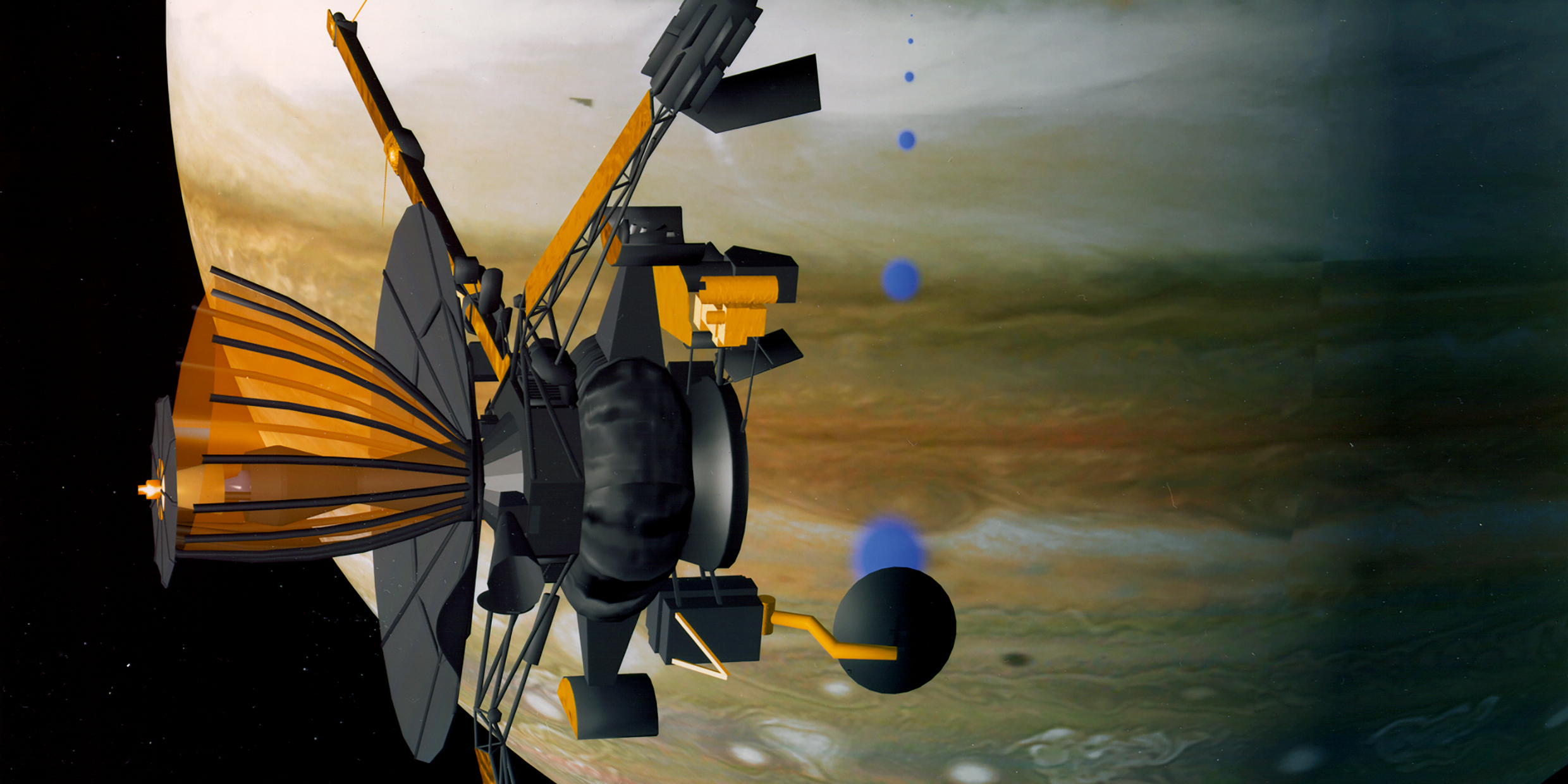Originally published 8 July 1991
Spacecraft Galileo is on its way to Jupiter.
The original itinerary would have taken the craft along a simple arc from Earth to Jupiter, but the Challenger shuttle disaster in 1986 forced a 3½-year delay in the launch, and a circuitous new trajectory for the journey.
After the disaster, NASA insisted on a smaller, safer upper-stage rocket to be carried aboard the shuttle. So Galileo’s new course takes it twice around the sun, including two flybys of Earth to pick up gravitational boosts for its outward journey. The technique is rather like bouncing several times on a trampoline to jump ever higher.
The first flyby occurred in December, 1990. Galileo skimmed just 600 miles above the Atlantic Ocean east of Florida. As the spacecraft zipped overhead, it trained its cameras and instruments on the home planet.
Spectrometers aboard the spacecraft observed the Earth’s upper atmosphere and recorded — among other things — oxygen and traces of nitrous oxide and methane in non-equilibrium concentrations, telltale signs of biological activity on the planet’s surface. One mission scientist said: “If this were a visiting Arcturian spacecraft, I’d be telling you that life abounds on Earth.”
Instruments passed the field test
OK, so there is life on Earth. No big surprise. But the flyby provided a satisfying test of the instruments that will study the atmosphere of Jupiter when Galileo arrives there in late 1995. The spacecraft is ready for any surprises.
Here’s another way to think about Galileo’s flyby of Earth, and the search for life on apparently lifeless planets.
Imagine a tiny spacecraft that flies within an inch or two of the human body. Is there life on planet Us? And, if so, how detect it?
Oh yes, it’s there. The human body supports a flora and fauna as prolific and vigorous as that of Earth. Within the savannas of the trunk and limbs, the jungles of the armpits and groin, the cool woods of the scalp, the Grand Canyons between the toes, and the dark caves of hair follicles live vast numbers of bacteria, mites, lice, and fungi.
The number of bacteria per square meter on the forehead is more than a hundred times greater than the number of metazoans (multicelled animals) per square meter of salt marsh. In an armpit the ratio is a thousand times greater. Some areas of the human skin are as densely populated with microorganisms as the soil in your garden.
This huge and varied population is invisible to the eye, just as the elephants, whales, and redwood trees of Earth were invisible to Galileo’s cameras. To detect life on Us requires the use of scientific instruments.
We owe a debt first of all to the Dutchman Anton van Leeuwenhoek, inventor of the microscope, for the discovery that our bodies are teeming ecosystems. In 1683 he wrote: “For my part I judge, from myself (howbeit I clean my mouth like I’ve already said), that all the people living in our United Netherlands are not as many as the living animals that I carry in my own mouth this very day.”
The high-tech successors of Leeuwenhoek’s instrument reveal the inhabitants of planet Us in all their bristly, prickly, many-footed glory.
Imagine a tiny space ship setting down on planet Us, with automatic cameras whirring. What extraordinary images it would broadcast back to its home planet!
Of course, the landing site would first have been reconnoitered by on-board instruments to measure surface temperatures, water concentrations, and the planet’s aura of vapors, some of them potentially due to surface inhabitants. This data would be analyzed by computers.
Then comes the landing, at a carefully chosen site in an armpit, tropically warm, thickly forested, moist with sweat. And the payoff: More than 2 million bacteria per square centimeter, squirming, gliding, creeping, corkscrewing, hardly a place for our spacecraft to set down without crushing inhabitants.
Galileo’s task was rather similar as it sped by Earth. Could it detect the presence of unseen life? The answer: Yes. And now, with its boost from Earth’s gravity, the spacecraft is climbing away from the sun. It will fly by the asteroid Gaspra in October of this year. Then it will fall back toward Earth, get another gravitational boost in December 1992 (and take another look for life), then it’s off for the rendezvous with Jupiter.
Dropping in for a look-see
Does life exist in the atmosphere of the solar system’s biggest planet? Almost certainly not. But Galileo will look for anything interesting. It will go into orbit around Jupiter and drop a parachuted probe into the Jovian atmosphere. None of the experiments aboard the orbiter or probe are specifically designed to look for life, but they will measure virtually every physical and chemical property of the thick multicolored clouds that are the planet’s upper layers.
If Galileo does find evidence of teeming organisms floating into those clouds, well, the surprise will be no greater than Leeuwenhoek’s when he peered though his new microscope at the apparently barren surface of planet Us.
Spacecraft Galileo arrived successfully at Jupiter in 1995 and spent 8 years exploring the Jovian system. No evidence of life was detected there. ‑Ed.



